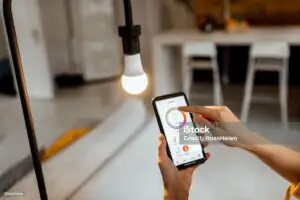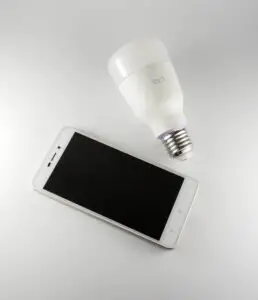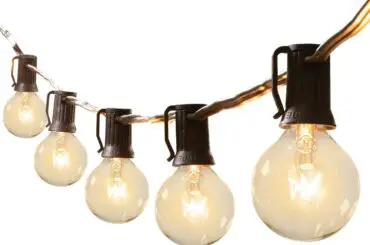Contents
Do smart bulbs use electricity when off?
In today’s world of smart technology and energy-conscious living, smart bulbs have emerged as a popular choice for modern homes. These intelligent lighting solutions promise not only convenience but also energy savings. They allow users to control their lights remotely, set schedules, and even adjust brightness levels to create the perfect ambiance. However, one question often lingers in the minds of those considering smart bulbs: “Do smart bulbs use electricity when off?”
Pose the Question:
This article aims to shed light on the fascinating world of smart bulbs and their energy-saving features while addressing the central question: “Do smart bulbs use electricity when off?”
Join us on this enlightening journey as we unveil the truth behind the power consumption of smart bulbs when they are not in use. Whether you’re a tech enthusiast seeking to optimize your smart home or an eco-conscious homeowner looking to reduce your energy footprint, the answers you seek are just a few scrolls away.
Understanding Standby Power
Define Standby Power:
Standby power, also known as vampire power or phantom power, refers to the electricity consumed by electronic devices when they are in a standby or “off” mode. In the context of smart bulbs, standby power is the energy they draw from the electrical grid when they are not actively emitting light or in use. Despite appearing switched off, smart bulbs maintain minimal power consumption to remain in standby mode, ready to respond to commands from a smartphone app, voice assistant, or scheduled routines.
Measurement:
Standby power consumption is typically measured in either watts (W) or milliwatts (mW). It represents the electrical energy that a device continuously draws from the grid to power its internal components, maintain connectivity, and respond to user-initiated actions. Even though the power consumption in standby mode is relatively low, it is continuous, making it a concern for energy-conscious individuals and environmental sustainability.
Typical Standby Power Consumption:
The typical standby power consumption of smart bulbs can vary depending on the brand, model, and additional features. However, in general, most smart bulbs are designed to have low standby power consumption. It is not uncommon for a smart bulb to consume anywhere from 0.2 watts (200 milliwatts) to 2 watts when in standby mode. While these values may seem insignificant on their own, they can accumulate when multiple smart bulbs are installed throughout a home, potentially contributing to higher energy bills over time.

Factors Affecting Standby Power:
Several factors can influence the standby power consumption of smart bulbs:
Brand and Model: Different manufacturers and models may have varying levels of standby power consumption. It’s advisable to consult product specifications or reviews to understand the efficiency of a specific smart bulb.
Additional Features: Smart bulbs with advanced features like color-changing capabilities may consume slightly more standby power than basic models. These additional features may require more standby power to maintain their functionality.
Connectivity: The method of connectivity can affect standby power consumption. Smart bulbs that connect via Wi-Fi, Zigbee, or Bluetooth may have different power requirements in standby mode.
Software and Firmware: Updates to a smart bulb’s software or firmware can sometimes impact its standby power consumption. Manufacturers may release updates to improve energy efficiency.
Understanding the standby power consumption of smart bulbs is crucial for making informed decisions about energy-efficient lighting solutions. In the following sections, we will explore the importance of minimizing standby power and strategies for achieving greater energy efficiency in smart lighting systems.
Importance of Standby Power
Energy Efficiency:
One of the paramount concerns in the era of smart home devices is energy efficiency. Smart bulbs, like other smart devices, are designed not only to provide convenience but also to contribute to reducing energy consumption.
Environmental Impact: Reducing energy consumption directly translates into a reduced environmental footprint. Lower energy usage means fewer greenhouse gas emissions and a smaller overall ecological impact.
Resource Conservation: Energy production requires valuable resources, including fossil fuels and natural gas. By minimizing energy consumption, we conserve these resources for future generations.
Grid Reliability: Lower energy demand contributes to a more stable and reliable electrical grid. This benefits not only individual homeowners but also entire communities.
Minimizing standby power consumption in smart bulbs aligns with the overarching goal of achieving greater energy efficiency in smart home ecosystems. By ensuring that these devices draw minimal power when not in use, we can make significant strides towards a more sustainable and eco-friendly future.
Long-Term Cost Savings:
Beyond the environmental benefits, the importance of standby power reduction extends to tangible long-term cost savings for homeowners. Here’s how:
Lower Energy Bills: Smart bulbs with reduced standby power consumption translate to lower energy bills over time. Even small reductions in standby power can add up, especially when multiplied by the number of smart bulbs in a home.
Return on Investment (ROI): Investing in energy-efficient smart bulbs may have a relatively quick return on investment. The energy savings realized from reduced standby power consumption can offset the initial cost of purchasing and installing these bulbs.
Enhanced Sustainability: Embracing energy-efficient practices, such as reducing standby power, aligns with broader sustainability goals. Many individuals and families are seeking ways to reduce their carbon footprint and environmental impact, and energy-efficient lighting solutions play a significant role in achieving these objectives.
In conclusion, the importance of minimizing standby power consumption in smart bulbs extends beyond mere energy efficiency—it encompasses environmental responsibility, resource conservation, grid reliability, and long-term cost savings. By selecting smart bulbs that are designed with low standby power in mind and implementing energy-efficient practices, homeowners can enjoy the benefits of both eco-conscious living and reduced utility expenses. The journey toward an energy-efficient and sustainable smart home begins with understanding the significance of standby power and taking proactive steps to minimize it.
Mitigating Standby Power
Using Smart Power Strips:
One effective strategy for managing standby power in a smart home is to utilize smart power strips. These intelligent devices go beyond the capabilities of traditional power strips by allowing you to control multiple devices simultaneously. Here’s how they work to cut power to devices when they’re not in use:
Remote Control: Smart power strips typically come with smartphone apps or can be integrated into your existing smart home ecosystem. Through these apps, you can remotely turn off power to all connected devices with a single tap.
Scheduled Control: Smart power strips offer the flexibility to schedule when connected devices receive power. For example, you can set them to turn off automatically during nighttime hours or when you’re away from home.
Energy Monitoring: Some smart power strips provide energy monitoring features, allowing you to track the energy consumption of individual devices. This insight helps you identify energy-hungry devices and make informed decisions about their usage.
By using smart power strips strategically, you can significantly reduce standby power consumption in your smart home. They are particularly effective for devices that are challenging to access individually or for groups of devices that are frequently used together, such as entertainment systems or home office setups.
Adjusting Settings:
Another proactive approach to mitigating standby power in smart bulbs involves adjusting settings in the accompanying smartphone apps or smart home platforms. Here’s how you can make a difference:
Scheduling and Routines: Most smart bulb apps offer scheduling and routine features. Take advantage of these tools to automate when your smart bulbs turn on and off. By scheduling them to align with your daily routines, you can minimize the time they spend in standby mode.
Dimming and Brightness Control: Consider adjusting the brightness levels of your smart bulbs to their lowest setting when not in use. This reduces their power consumption during standby mode while still allowing you to quickly brighten the room when needed.
Vacation Mode: Some smart bulb apps include a vacation mode, which simulates occupancy by randomly turning lights on and off. While primarily a security feature, it can also help minimize standby power by ensuring bulbs are not in standby mode for extended periods.
Firmware Updates: Keep your smart bulb’s firmware up to date. Manufacturers often release updates that may include improvements in energy efficiency, including standby power reduction.
By fine-tuning settings and optimizing schedules and routines, you can tailor your smart bulbs’ behavior to align with your energy-saving goals. These adjustments not only reduce standby power but also enhance the overall efficiency and convenience of your smart lighting system.
Incorporating these strategies into your smart home management can make a meaningful difference in reducing standby power consumption, contributing to both energy savings and environmental sustainability.
Conclusion

Recap and Answer the Question:
Throughout this article, we’ve delved into the intriguing world of smart bulbs and their intriguing relationship with electricity consumption, even when they appear to be switched off. It’s time to recap the key points discussed and provide a clear answer to the central question: “Do smart bulbs use electricity when off?”
Recap of Key Points:
We explored the definition of standby power and its relevance to smart bulbs, shedding light on the concept of vampire power in modern homes.
Standby power consumption is typically measured in watts or milliwatts, revealing the continuous energy draw of smart bulbs in standby mode.
The typical standby power consumption of smart bulbs varies based on brand, model, and additional features but generally ranges from 0.2 watts to 2 watts.
Several factors, including brand, model, additional features, connectivity methods, and software updates, can influence the standby power consumption of smart bulbs.
Provide a Clear Answer:
The answer is unequivocal: “Yes, smart bulbs do use a small amount of electricity when they are turned off.” Standby power, though minimal, is an inherent aspect of these devices, necessary to maintain connectivity and respond promptly to user commands.
Highlight the Significance:
Understanding the standby power consumption of smart bulbs carries profound significance in the realm of modern smart homes. It touches upon:
Energy Efficiency: By minimizing standby power, we contribute to enhanced energy efficiency, reduced environmental impact, and responsible resource consumption.
Long-Term Cost Savings: Smart bulbs with lower standby power consumption lead to tangible, long-term cost savings for homeowners, creating a compelling financial incentive for energy-conscious choices.
Environmental Responsibility: Reducing standby power aligns with broader environmental responsibility and sustainability goals, making it an integral part of eco-conscious living.
In conclusion, the journey to an energy-efficient and eco-friendly smart home begins with a clear understanding of standby power and its implications. Armed with this knowledge, homeowners can make informed decisions, implement energy-saving strategies, and enjoy the benefits of both reduced utility expenses and a reduced carbon footprint. Standby power may be a small current, but its impact on our homes and the planet is undoubtedly substantial.





